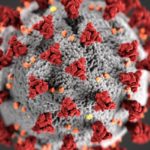1. High dose dexamethasone was nonsuperior in regards to 60-day survival outcomes as compared with regular dose dexamethasone in COVID-19 patients with acute hypoxemic respiratory failure.
2. Continued positive airway pressure and high flow nasal oxygen did not reduce the need for mechanical ventilation in non-ventilated patients compared to standard oxygen therapy.
Level of Evidence Rating: 1 (Excellent)
Study Rundown: COVID-19 has accounted for millions of deaths worldwide. The virus can cause severe lung disease and acute hypoxemic respiratory failure (AHRF), the optimal management of which is not yet known. Previous studies have demonstrated that a 10-day course of dexamethasone at a low dose of 6 mg per day reduced 28-day mortality in patients with COVID-19. The present study sought to evaluate whether high dose dexamethasone was superior to the standard of care in improving mortality outcomes amongst COVID patients. Additionally, this trial aimed to describe the optimal oxygenation strategy in non-ventilated patients in an intensive care setting.
A randomized controlled trial of 550 patients with COVID-19 was conducted. In total, 277 received standard/low dose dexamethasone and 273 received high dose dexamethasone. 333 patients were not ventilated and were additionally randomized for oxygen therapy. From the low dose dexamethasone group, 56 received standard therapy, 57 continued positive airway pressure (CPAP), and 56 high flow nasal oxygen (HFNO2). In the high dose group, 53 received standard therapy, 52 CPAP, and 59 HFNO2. Overall, 144 patients died within 60 days of randomization including 74 patients in the low dose and 70 patients in the high dose groups. This finding was considered nonsignificant. There was also no significant difference in the requirement for ventilation in non-ventilated patients who had standard oxygen therapy compared to CPAP or HFNO2.
The present study found that high dose dexamethasone is nonsuperior to low dose dexamethasone in the management of COVID-19 patients with AHRF. As well, the authors concluded that HFNO2 and CPAP do not reduce the need for ventilation in non-ventilated patients compared to standard oxygen therapy alone. These findings are important as clinicians continue to make gains in understanding and treating COVID-19. The findings reported in this study are strengthened by the randomized controlled design of the trial as well as the large sample size. A primary limitation of this work is the low adherence to the designated treatment arm as well as the small number of patients per group for the oxygen therapy component of this trial. The findings described here may help to guide management and provoke further research into therapeutic options for COVID-19 patients.
Click here to read this study in JAMA Internal Medicine
Relevant reading: The use of high-flow nasal oxygen in the ICU as a first line therapy for acute hypoxemic respiratory failure secondary to coronavirus disease 2019
In Depth: [randomized controlled trial]: This study was a multi-center randomized controlled trial conducted in France. Eligible patients were adults admitted to the intensive care unit with COVID-19 who met criteria for AHRF (PaO2<70mmHg, SpO2<90% on room air, respiratory rate > 30 breaths per minute, labored breathing, respiratory distress, need for >6L of oxygen). All patients were randomized to either high or low dose dexamethasone, and patients who were not already requiring mechanical ventilation were additionally randomized to receive regular oxygen therapy, HFNO2 or CPAP. The primary outcome was time to death from all causes up to 60 days from trial initiation.
The rate of death within 60 days was 26.8% within the high dose group and 25.9% within the low dose group; the hazard ratio was 0.96 (95% confidence interval 0.69 to 1.33). There was no significant difference in low dose and high dose dexamethasone between patients who were (0.88, 0.58-1.29) versus were not mechanically ventilated (1.08, 0.64-1.83). In non-ventilated patients, the rate of requiring a ventilator at 28 days was 41.4% (32.0-50.4%) in patients treated with standard oxygen, 43% (33.3-52.2%) in patients treated with CPAP and 43.8% (34.5-52.6%) in those treated with HFNO2. The hazard ratio for requiring ventilation in standard oxygen therapy versus CPAP patients was 1.08 (0.71-.63) and was 1.04 (0.69-1.55) versus HFNO2.
Image: PD
©2022 2 Minute Medicine, Inc. All rights reserved. No works may be reproduced without expressed written consent from 2 Minute Medicine, Inc. Inquire about licensing here. No article should be construed as medical advice and is not intended as such by the authors or by 2 Minute Medicine, Inc.


